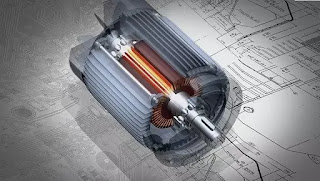Cell Selection Guide for Lithium ion Battery pack.
BY AFZAL YOUSAF
As the world is in a path leading to massive adaption of electric vehicles, debates are also ongoing regarding the safety and risk involved in electric vehicles, especially in India due to recent incidents of electric scooters catching fire. Proper selection of battery pack and vigorous testing of the vehicle should be done before entering into the market.
As battery pack is the most vital component in EVs, building the packs needs proper selection of cells to ensure vehicle performance and safety. Cell selection depends on multiple factors and here we can go through some of the important factors to be considered during the selection of cells in EV Battery pack.
- Cell Chemistry - Cells are manufactured with different chemistries, like different Anode and Cathode for various applications. Cell chemistry plays a major role in effectiveness, energy density, thermal stability of the cells. Though researches are ongoing to develop new cell types and chemistries, here we can look the commercially available cell types for EVs in the market.
- Lithium Ferrous Phosphate (LFP)
- Nickel Manganese Cobalt (NMC)
- Lithium Cobalt Oxide (LCO)
- Nickel Cobalt Aluminum (NCA)
- Lithium Titanium Oxide (LTO)
- Lithium Manganese Oxide (LMO)
 |
| Credits:- Express mobility |
- Cell Characteristics - During the selection of cells, we also need to consider the cell characteristics and need to study the cell datasheets, which includes all the details about the cell. Some of the important characteristics are:-
- Nominal Voltage - Rated voltage of the cell
- Charge Voltage - Upper cutoff voltage of cell
- Discharge Voltage - Lower cutoff voltage of cell
- Cell capacity - Energy stored in cell and expressed in Ah
- Internal resistance - Resistance offered by the cell
- C- Rate - Charging and Discharging rate of cell. 1 C rate of discharge indicates cell will be fully discharged in 1 hour.
- Operating temperature - Safe operating temperature for the cell. Need to be maintained in that temp range for safer operation.
- Cycle life - Life cycle of the cell and it varies for each cell chemistry
- Cell Form Factor - Form factor indicates the shape of the cell. We can select cell shapes based on our applications and space availability. Cells available commercially in the markets are:-
- Cylindrical - Cylindrical cells are mostly used in small EVs like 2 wheelers and 3 wheelers. It is easy to manufacture and provides high mechanical stability by withstanding internal pressures. Energy storage capacity is less due to its shape.
- Prismatic - Prismatic cells are mostly used in Higher EVs like 4 wheelers and above. These cells have higher volume and capacity compared to cylindrical. But in case of thermal management, these are less efficient and needs proper cooling system to ensure safer and efficient operation.
- Pouch - Pouch cells are rarely used in EVs and its undergoing several research to be efficiently used in EV application.







Comments
Post a Comment
Please do not enter any spam link in the comment box.